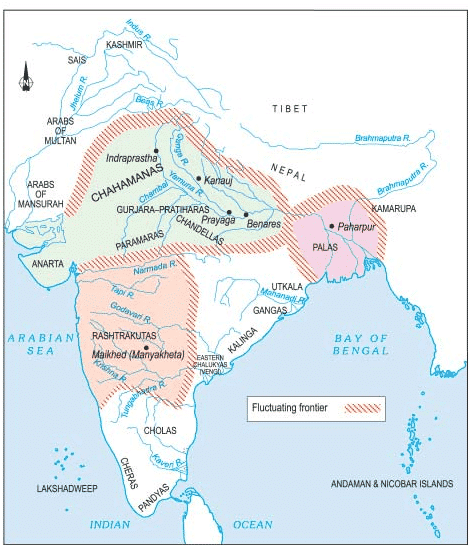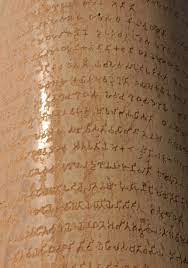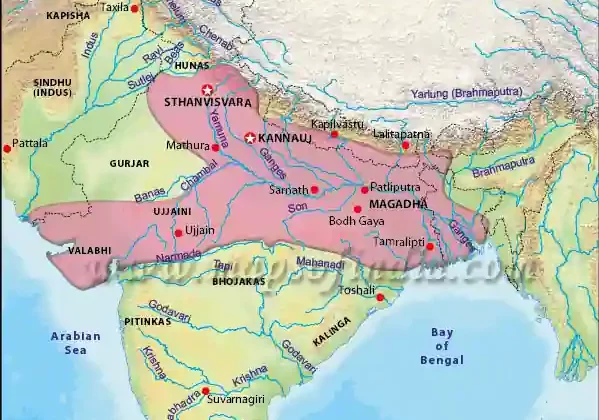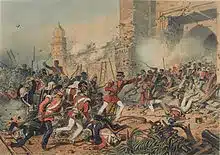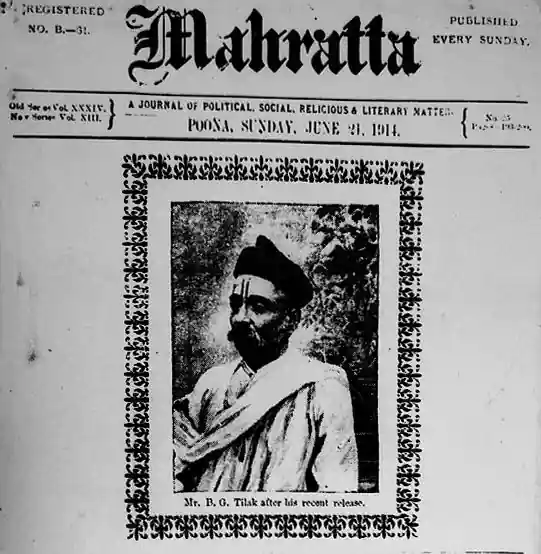Different Plans for Indian Independence are given in this article.
The August Offer
Background
- During the Second World War, the Indian National Congress (INC) leaders were upset with the British government for having pulled India into a war without the consent of the Indians. Lord Linlithgow had declared India to be at war with Germany without consultation.
- France had fallen to the Axis Powers and the Allies were suffering many reverses in the war. There was also a change of government in Britain and Winston Churchill became the British Prime Minister in 1940.
- The British government was keen to get Indian support for the war. Britain herself was in danger of being occupied by the Nazis and in this light, the INC softened its stand. It said that support for the war would be provided if power was transferred to an interim government in India.
- Then, the Viceroy Linlithgow made a set of proposals called the ‘August offer’. For the first time, the right of Indians to frame their own constitution was acknowledged.
August Offer – Proposal
- The British government proposed dominion status as an objective for India.
- Following the war, a representative Indian body would be formed to draft a constitution for the country.
- The Viceroy’s Council would be extended, allowing more Indians to participate than whites.
- An advising war council would be constituted after the war.
- The British government, however, refused to grant complete independence.
- The British will retain control of the defense, finance, and home affairs, as well as all Republic of India services.
- Viceroy further indicated that the disagreement between the Indian National Congress (INC) and the Muslim League will be addressed before any constitutional reform.
- Minorities were guaranteed that their views will be taken into account in a future constitution.
Response
- The Congress rejected the August Offer of 1940 because they desired complete independence, but they were offered Dominion status instead.
- The League likewise turned down the offer, stating that they would accept nothing less than the country’s separation.
- Following this, Mahatma Gandhi launched the Individual Satyagraha to affirm the right to free expression. Because he did not desire violence, he avoided a mass satyagraha.
- Vinoba Bhave, Nehru, and Brahma Datt were the first three satyagrahis. All three were sentenced to prison.
- The satyagrahis also started the ‘Delhi Chalo Movement,’ which was a march towards Delhi.
- The movement did not gain traction and was abandoned in December 1940.
- Following the August Offer’s failure, the British government dispatched the Cripps Mission to India in an attempt to gain Indian support for the war.
Evaluation
- For the first time, Indians’ inherent right to write their own constitution was recognized, and Congress’ demand for a constituent assembly was granted.
- The offer of Dominion status was made explicitly.
- The viceroy’s executive council was expanded in July 1941, giving the Indians a majority of 8 out of 12 for the first time, but the British remained in charge of defense, finance, and home affairs.
- In addition, a National Defence Council with purely advisory functions was established.
Cripps Mission
The Mission was headed by Stafford Cripps.
Background
- Japan was advancing outside the eastern borders of India and the fall of Burma was a jolt to the British in the war. The threat of a Japanese invasion on India was looming and Indian support was essential for Britain’s war efforts.
- When the 2nd World War broke out in 1939, the Viceroy Lord Linlithgow declared India a party to the war as part of the British Empire. This was done without consultation with Indians and this led to massive protests from the Congress Party. The party leaders, who were heading 7 provincial governments resigned from their posts. The Muslim League celebrated it as ‘Deliverance Day’.
- Britain was facing pressure from the US and other allied leaders over its own imperial policies in India and also to secure Indian cooperation for the Allied war effort. This also led the British government to send Cripps to India.
Proposals of Cripps Mission
- Setting up of an Indian dominion. This dominion would have the freedom to remain with the British Commonwealth or to secede from it. It would also be at liberty to take part in international organizations.
- A Constituent Assembly would be formed to frame a new constitution for the country. This Assembly would have members elected by the provincial assemblies and also nominated by the princes.
- Any province unwilling to join the Indian dominion could form a separate union and have a separate constitution.
- The transfer of power and the rights of minorities would be safeguarded by negotiations between the Constituent Assembly and the British government.
- In the meantime, until this new constitution came into force, India’s defence would be controlled by the British and the powers of the Governor-General would remain unaltered.
Significance of Cripps Mission
- For the first time, the British government acknowledged India’s right to be a dominion.
- Indians could frame their own Constitution.
- The proposal of giving freedom to the provinces to be a separate union turned out to be a model for the country’s partition in 1947.
- The right to cede from the Commonwealth indicated full sovereignty at a later stage.
- In the interim period, Indians were guaranteed a good share in the administration.
Why did the Cripps Mission Fail?
- The proposals were seen as too radical by the British and as too conservative by the INC who wanted complete independence.
- The Mission was rejected by the INC, the Muslim League and other Indian groups.
- The INC was against the provinces’ right to separately form unions as this was damaging to national unity.
- Muslim League did not like the idea of a single union of India.
- The Hindu Mahasabha and the Liberals were against the right of states to secede.
- The Depressed Classes objected because they were apprehensive about their status in a country where they would be in a minority.
- It is also believed that the mission failed because of a clear lack of support for it by the Viceroy Linlithgow, British PM Winston Churchill and the Secretary of State for India, Leo Amery.
*After the failure of the mission, Cripps returned to England, and the Congress led by Gandhi started their new campaign, the Quit India Movement in August 1942.
Indian National Congress Sessions
Important Social Reforms Acts Of British India
20 Lesser-Known Indian Freedom Fighters
C R Formula or the Rajaji Formula
Background
- During the Second World War, the British government, under the viceroyalty of Lord Linlithgow had said that any move towards an Indian statehood would be possible only if the Indian National Congress (INC) and the Muslim League resolve their differences.
- The League was increasingly demanding a separate nation of Pakistan for the Muslims whereas the INC was against the partitioning of the country.
- To break this deadlock between the two major political parties in India, C Rajagopalachari, INC member who was close to Mahatma Gandhi, proposed a set of plans called the C R Formula or Rajaji Formula.
- This was the first acknowledgement by a Congressman about the inevitability of the partition of the country and a tacit acceptance of Pakistan.
Proposals
- The Muslim League would join hands with the INC to demand independence from the British.
- Both parties would cooperate and form a provisional government at the centre.
- After the war, a commission would be entrusted with the task of demarcating those areas with an absolute majority of Muslims and a plebiscite to be held in those areas where all the inhabitants (Muslims and non-Muslims) would vote based on adult suffrage whether to form a separate sovereign nation or not.
- In case of partition, joint agreements to be made for the safeguarding of defence, communications and commerce.
- The above terms to come to fruition only if Britain transfers full powers to India.
Reaction
- In 1944, Gandhi and M A Jinnah held talks on the basis of the Rajaji Formula.
- The talks were a failure as Jinnah had objections to the proposal.
- Jinnah’s objections:
- He wanted the INC to accept the Two-Nation Theory.
- He did not want the entire population of the Muslim majority areas to vote on the plebiscite, but only the Muslim population in those areas.
- He was also against the idea of a common centre. Also, Jinnah wanted separate dominions to be created before the English left India.
- The Sikhs also looked upon the formula unfavourably because the formula meant a division of Punjab. Although the Sikhs were a big chunk of the population, there were not in the majority in any of the district.
- V D Savarkar and Shyama Prasad Mukherjee of the Hindu Mahasabha and Srinivas Sastri of the National Liberal Federation were also against the C R Formula.
- The INC, which was hitherto opposed to the partition of the country was willing to give some concessions to get the League on board for talks for independence, but the League was more interested in Pakistan than freedom.
Wavell Plan and Shimla Conference
The Wavell Plan was first presented at the Shimla Conference in 1945. It was named after Viceroy of India, Lord Wavell.
The Shimla Conference was convened in order to agree on the Wavell Plan for Indian self-government, which provided for separate representations on communal lines.
Both the plan and the conference failed on account of the Muslim League and the Indian National Congress not coming to an agreement.
Background of the Wavell Plan and the Shimla Conference
The Second World War had caused many socio-economic problems in the British Empire, especially when it came to maintaining their overseas colonies. Thus the British Government saw it fit to grant India the freedom it had been demanding for so long. In addition, the Quit India Movement and an increase in revolutionary activity only made the British position in India tenuous at best.
Lord Wavell, who became the Viceroy in 1943, was charged with presenting a formula for the future government of India that would be acceptable to both the Indian National Congress and the All-India Muslim League, allowing for a smooth transition of power. Lord Wavell was considered an apt person for this task as he had been the head of the Indian Army and thus had a better understanding of the Indian situation.
What did the Wavell Plan Propose?
In May 1945 Wavell visited London and discussed his ideas with the British Government. These London talks resulted in the formulation of a definite plan of action which was officially made public simultaneously on 14 June 1945 by L.S. Amery, the Secretary of State for India. The Wavell Plan proposed the following:
- The Viceroy’s Executive Council was to have all Indian members except the Viceroy himself and the Commander-in-Chief.
- The council was to have a ‘balanced representation’ of all Indians including ‘caste-Hindus’, Muslims, Depressed Classes, Sikhs, etc. Muslims were given 6 out of 14 members which accounted for more than their share of the population (25%).
- The Viceroy/Governor-General would still have the power of veto but its use would be minimal.
- The foreign affairs portfolio would be transferred from the Governor-General to an Indian member. The defence would be handled by a British general until the full transfer of power was made.
- A conference would be convened by the Viceroy to get a list of all the members recommended to the Council from all parties concerned. In case a joint list was not agreed upon, separate lists would be taken from the parties. This was to be the Shimla Conference.
- If this plan worked, similar councils would be formed in all provinces comprising of local leaders.
What happened at the Shimla Conference?
Lord Wavell invited 21 political leaders including Mahatma Gandhi and M A Jinnah to Shimla, the summer capital of British India to discuss the Wavell Plan on June 25th, 1945.
- The conference was a failure because the League and the Congress could not settle their differences.
- Jinnah insisted that only League members could be the Muslim representatives in the Council, and opposed to the Congress nominating Muslim members. This was because Jinnah wanted the League to be the sole representative of Muslims in India. Congress would never agree to this demand.
- In the Wavell Plan, there were 6 Muslim representatives out of 14 members, which was more than the Muslim share of the population. Despite this, the League wanted the power of veto to any constitutional proposal which it believed was not in its interest. Congress opposed this unreasonable demand also.
- Jinnah refused to give the names to the council unless the government acknowledged that only the Muslim League was the exclusive representative of Indian Muslims.
- The Wavell Plan, thus, was dissolved with the failure of the conference. And with it the last chance to avoid partition.
- After this, the war ended and a new Labour government was elected in Britain. This new government was intent on giving independence to India without much delay and sent the Cabinet Mission with that purpose.
The failure of the Wavell Plan and the Shimla Conference was a watershed moment for the Indian Independence struggle. All steps taken to prevent partition had been met with failure, meaning that it was inevitable.
Cabinet Mission
Clement Atlee (British Prime Minister) decided to send a mission to India for the transfer of powers from the British Indian government to Indian leaders.
The mission had three members mentioned with their posts in the table below:
| Cabinet Mission Members | Cabinet Mission Members – Designation |
| Pethick Lawrence | Secretary of State for India |
| Stafford Cripps | President of the Board of Trade |
| A.V. Alexander | First Lord of Admiralty |
You should know that Lord Wavell was not a member of the Cabinet Mission but was involved.
Objectives of Cabinet Mission
- To obtain an agreement with the Indian leaders as to the framing of a constitution for India.
- To formulate a constitution-making body (the Constituent Assembly of India).
- To establish an Executive Council with the support of the major Indian parties.
Why did the Cabinet Mission fail?
The main reasons for the failure of the Cabinet Mission are given below:
- The Congress Party wanted a strong centre with minimum powers for the provinces.
- The Muslim League wanted strong political safeguards for the Muslims like parity in the legislatures.
- Since both parties had many ideological differences and could not find common ground, the mission came up with its own set of proposals in May 1946.
- The Dominion of India would be granted independence, without any partition.
- The provinces would be divided into three groups/sections:
- Group A: Madras, Central Provinces, UP, Bihar, Bombay and Orissa
- Group B: Punjab, Sindh, NWFP and Baluchistan
- Group C: Bengal and Assam
- The Muslim-majority provinces were grouped into two groups and the remaining Hindu-majority in one of the groups.
- The central government at Delhi would have powers over the defence, foreign affairs, communications and currency. The rest of the powers would be vested with the provinces.
- A constituent assembly would be set up for writing a new constitution for the country. An interim government would be established until a new government was formed on the basis of the constitution written by the constituent assembly.
- The Congress was not keen on the idea of the groupings of provinces on the basis of Hindu-Muslim majority and vying for control at the centre. It was also against the idea of a weak centre. The Muslim League did not want any changes to the proposals.
- Since the plan was not accepted, a new plan was proposed by the mission in June 1946. This plan proposed the division of India into a Hindu-majority India and a Muslim-majority India later to be renamed Pakistan. A list of princely states was also made that could either join the union or remain independent.
- The Congress Party under Jawaharlal Nehru did not accept the second plan. Instead, it agreed to be part of the constituent assembly.
- The Viceroy invited 14 men to form the interim government. There were 5 from the Congress, 5 from the League, 1 member each representing the Sikh, Parsee, Indian Christian and scheduled caste communities.
- Both the League and the Congress were given the right to nominate 5 members to the Viceroy’s interim council. The Congress nominated Zakir Hussain as one of the members to which the League objected saying only it represented Indian Muslims and no other party. The Muslim League did not take part in it.
- The Congress leaders entered the viceroy’s interim council and thus Nehru headed the interim government. The new government began the task of framing a constitution for the country.
- Congress-led governments were formed in most provinces including the NWFP. In Bengal and Sind, the League formed the governments.
- Jinnah and the League objected to the new central government. He geared to agitate for Pakistan and urged Muslims to demand Pakistan by any means. He called for ‘Direct Action Day’ on 16 August 1946.
- This call led to widespread communal rioting in the country with 5000 people being killed on the first day in Calcutta. Communal riots spread to many other areas notably Noakhali and Bihar.
- There was a call for the partitioning of the country on account of the riots. Sardar Vallabhbhai Patel was one of the first Congress leaders to acknowledge the inevitability of the partition as a means to stop the brutal violence.
Mountbatten Plan
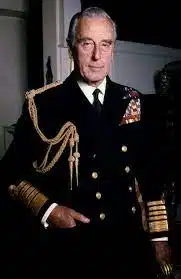
Lord Mountbatten (India’s last viceroy) proposed a plan in May 1947 according to which provinces were to be declared independent successor states with the power to choose whether to join the constituent assembly or not.
Mountbatten Plan Background
- Lord Mountbatten came to India as the last Viceroy and was assigned the task of a speedy transfer of power by the then British Prime Minister Clement Atlee.
- In May 1947, Mountbatten came up with a plan under which he proposed that the provinces be declared independent successor states and then be allowed to choose whether to join the constituent assembly or not. This plan was called the ‘Dickie Bird Plan’.
- Jawaharlal Nehru (Born on November 14, 1889) when apprised of the plan, vehemently opposed it saying it would lead to Balkanisation of the country. Hence, this plan was also called Plan Balkan.
- Then, the viceroy came up with another plan called the June 3 Plan. This plan was the last plan for Indian independence. It is also called the Mountbatten Plan.
- The June 3 Plan included the principles of partition, autonomy, sovereignty to both nations, right to make their own constitution.
- Above all, the Princely States such as Jammu and Kashmir were given a choice to either join India or Pakistan. The consequences of these choices would affect the new nations for decades to come.
- This plan was accepted by both the Congress and the Muslim League. By then, the Congress had also accepted the inevitability of the partition.
- This plan was put into action by the Indian Independence Act 1947 which was passed in the British Parliament and received the royal assent on 18 July 1947.
Provisions of the Mountbatten Plan
- British India was to be partitioned into two dominions – India and Pakistan.
- The constitution framed by the Constituent Assembly would not be applicable to the Muslim-majority areas (as these would become Pakistan). The question of a separate constituent assembly for the Muslim-majority areas would be decided by these provinces.
- As per the plan, the legislative assemblies of Bengal and Punjab met and voted for the partition. Accordingly, it was decided to partition these two provinces along religious lines.
- The legislative assembly of Sind would decide whether to join the Indian constituent assembly or not. It decided to go to Pakistan.
- A referendum was to be held on NWFP (North-Western Frontier Province) to decide which dominion to join. NWFP decided to join Pakistan while Khan Abdul Gaffar Khan boycotted and rejected the referendum.
- The date for the transfer of power was to be August 15, 1947.
- To fix the international boundaries between the two countries, the Boundary Commission was established chaired by Sir Cyril Radcliffe. The commission was to demarcate Bengal and Punjab into the two new countries.
- The princely states were given the choice to either remain independent or accede to India or Pakistan. The British suzerainty over these kingdoms was terminated.
- The British monarch would no longer use the title ‘Emperor of India’.
- After the dominions were created, the British Parliament could not enact any law in the territories of the new dominions.
- Until the time the new constitutions came into existence, the Governor-General would assent any law passed by the constituent assemblies of the dominions in His Majesty’s name. The Governor-General was made a constitutional head.
Source: NCERT
Also read this:


